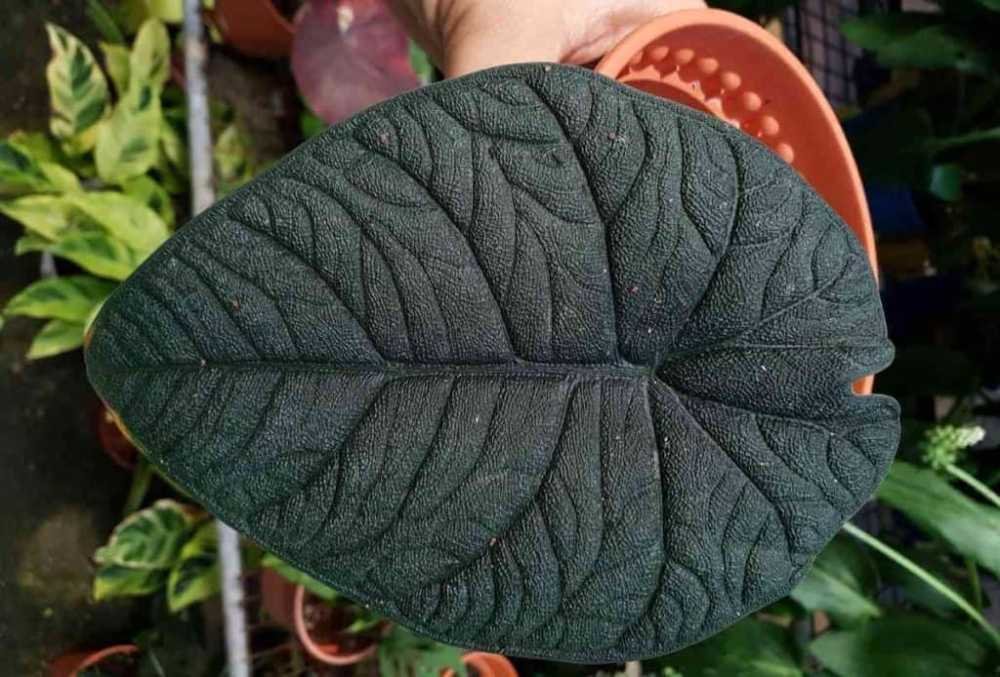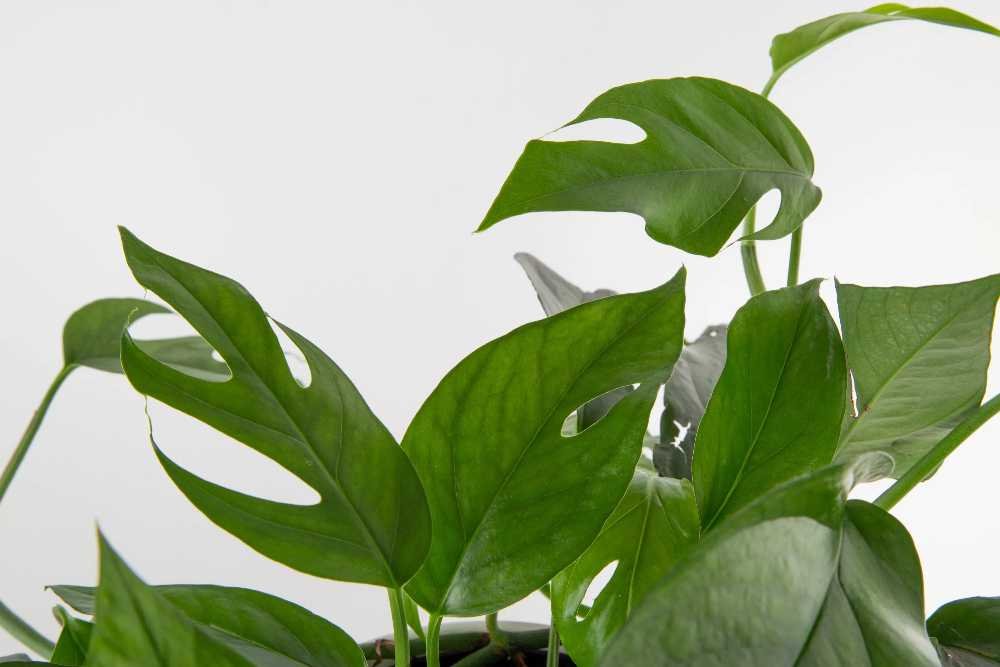Syngonium Pink Splash is a popular houseplant and for good reason. Syngonium Pink Splash flourishes to reveal attractive pink and green foliage with an arrowhead shape, which makes it unique and a darling to most gardeners and plant lovers.
If you are a beginner looking for a houseplant to add to your home or office space, the Pink Splash Syngonium is a good place to start. This beginner’s guide will take you through the process of growing and caring for your indoor plant for the best results.
What is Syngonium Pink Splash?
Syngonium Pink Splash, (botanical name Syngonium podophyllum) is a Syngonium cultivar of the Curaceae family. Syngoniums are tropical trailing plants native to West Indies, Mexico, Central America, and South America.
They come in numerous varieties with unique growth habits, patterns, and variegations. In their natural habitat, Syngoniums can grow up to 20 meters tall, climbing on other plants and physical structures.
The Arrowhead Plant is a cultivar, meaning it exists due to mutation, as a hybrid, or as a result of selective breeding. Unlike other Syngoniums, the Arrowhead plant has variegation with shades of pink that can occur as speckles, splashes, and marbles. The intensity of the color varies with each plant, and every leaf on the same plant can have a different variegation pattern.
The pink-on-green contrast creates a striking appearance, and the color is more pronounced in younger plants. The leaves are in the shape of an arrow, which gives it the name” Arrowhead vine”. They also have a pointed tip, although the lobe may differ due to growing conditions.
As an indoor plant, Pink Splash Syngonium can grow as big as 6 feet with 2 feet spread. Note that Syngoniums are toxic to humans and pets. However, they require a low-maintenance, making them an excellent option for all plant lovers, regardless of experience.
Caring for Syngonium Pink Splash
You don’t have to provide Syngonium Pink Splash with special conditions for it to thrive. The following tips will help you grow and maintain a healthy Syngonium Pink Splash.
Ideal Growing Conditions
Here are the ideal growing conditions for Syngonium Pink Splash:
1. Light
The thin leaves of Arrowhead Plant cannot withstand direct sunlight. As such, keep your plant in indirect sunlight to avoid scorching the leaves. The plant loves bright and medium light, although you can grow it under artificial light if you lack adequate lighting.
The Syngonium Pink Splash needs sufficient light to maintain a vibrant pink color. In low-light conditions, the leaves lose their pink color and turn to a solid green.
2. Temperatures
The ideal temperatures for the Pink Splash Syngonium are between 600-800F. The warm temperatures are excellent for speedy growth, although too high causes excess water loss. On the same note, do not subject your Syngonium plant to temperatures below 500F. Also, avoid keeping it near drafts and vents, especially during winter, as it is not used to cold temperatures.
3. Soil Requirements
Get nutrient-rich, well-drained, slightly acidic soil (PH of 6-6.5), and your Syngonium Pink Splash will love you for it. The soil should also be moist but not retain water. While most premixed soils for indoor plants will work fine, ensure your soil contains lots of organic matter.
Your best soil choice should have peat moss or coco coir and perlite. You can also use orchid bark and perlite since the latter maintains ideal soil acidity.
4. Humidity
High humidity is necessary for Syngonium Pink Splash to thrive. Provide your houseplant with an average humidity of 50%-60% for it to grow well. Since it is a versatile plant, it can also accommodate 40% humidity levels without a problem.
For days when humidity is low, increase it using a humidifier, misting the leaves, or placing the plant on a water tray with pebbles. You can also mix it with high-humidity plants.
5. Watering
Arrowhead Plant loves moist soil. Water it regularly but ensure the excess water drains off to avoid overwatering. Overwatering it encourages fungus and bacteria, and results in root rot.
Always give the soil time to dry a bit before repeating the process. However, leaving it dry too long will dry up the leaves, while leaving it wet for too long causes waterlogging. Water-logged soils prevent oxygen from reaching the roots, causing the leaves to turn yellow.
6. Fertilizer
A general fertilizer is okay for Arrowhead Plant. Apply water-soluble fertilizer during growing seasons (spring and summer) once a month to feed your plant the necessary nutrients. Since it is dormant during winter and fall, fertilizing is not necessary. Also, ensure you dilute the fertilizer by half the recommended concentration to avoid burning the roots.
Repotting
Syngonium Pink Splash is a fast grower with extensive roots that will outgrow its pot a year or two after planting. This is when you should consider repotting.
When choosing a pot for this task, select one that leaves a 1-inch space around the roots. Although it is advisable to go a size bigger, an overly big pot will collect water instead of allowing it to be absorbed by the roots or drain away.
Spring is the best time to repot. After repotting water immediately to allow the roots to settle and for the soil to nourish it
Pruning
The aggressive growth and spreading of Arrowhead Plant means you may need to prune often, as it can quickly fill up any space. Since it is a vine, you can leave it to trail or prune it into whatever shape you want. Note that pruning causes it to become a bushier houseplant. Pruning twice or thrice a year is ideal.
The best time to prune Syngonium Pink Splash is just before the growing seasons. During pruning, remove any yellow or brown leaves, and pinch back on the leggy stems for the plant to branch out and become more compact.
Pruning stimulates new growth in the cut areas, keeping your houseplant looking fuller and healthier. Remember to trim below the nodes.
Propagation
Since Pink Splash Syngonium is an aggressive and effortless grower, propagation is an easy task with a high chance of success. You can propagate new shoots or mature stems, depending on your preference.
New stems have smaller leaves that are heart-shaped and rounder, while mature ones are longer and have a more obvious arrow shape. Younger stems have more chances of success.
Choose the stems that are next to aerial roots for the best results. Cut the stem at least one inch below the node and insert only the bottom part in water. Wait until roots start emerging before replanting them. Be sure to clean the water regularly to prevent bacteria.
You can also dip the stem in rooting hormone to speed up the rooting process before putting it directly in the soil. Bury 2 or 3 nodes under the soil and remove any leaves at the bottom of the stem. If you want a bushy houseplant, consider combining multiple stems in the same pot.
Potential Issues When Growing Syngonium Pink Splash
While Syngonium Pink Splash is a resilient plant, you may have to deal with the following issues.
Pests
Syngonium Pink Splash is quite resistant to pests. But it may still fall victim to spider mites, mealy bugs, scale insects, and aphids. Separate the plant from the rest during this period to prevent pests from spreading.
Observe the surface of the leaves for any signs of white cotton-like spots (mealy bugs), small webs under the leaf (spider mites), aphids, and scale insects. Fortunately, you can eliminate them using insecticidal soap. Spraying neem oil and a fungicide interchangeably on the plant can prevent future infestations.
Diseases
The most common disease affecting Pink Splash Syngonium is root rot due to excess watering. When this happens, the plant’s leaves turn yellow. To correct this, allow enough time between watering and reduce humidity levels. Providing good ventilation around the plant can also help.
Syngonium Pink Splash may also suffer from leaf spot disease, characterized by dark or brown spots on the leaves. This usually occurs due to high humidity and overwatering, which encourages bacteria and fungus. The best way to deal with it is by washing the plant, removing the affected leaves, and applying a fungicide.
Toxicity
Syngonium Pink Splash is toxic to pets and humans as it contains calcium oxalates. Ingestion may result in swelling and vomiting, as well as drooling in cats. For safety purposes, keep the houseplant out of reach of children and pets. Also, seek medical attention immediately in case of consumption.
The Benefits of Syngonium Pink Splash
Besides being an ornamental plant, the Pink Splash Syngonium has numerous benefits that contribute to your overall well-being. Here are a few benefits of having the Arrowhead Plant in your home or office.
Air Purification
Arrowhead Plant has air purification abilities. It can absorb pollutants from the air and filter common toxins such as benzene and xylene present in household items. As such, you can enjoy cleaner and fresher air as it removes harmful components and provides oxygen in return.
Boost Humidity
Since the leaves of Arrowhead Plant naturally expel moisture, it can add to the humidity levels in your indoor space. This comes in handy if you live or work in a dry environment, and during winter when the air is dry. As a result, you get to safeguard your respiratory health and avoid dry skin.
Stress Relief
As an indoor plant, Syngonium Pink Splash can help you relieve stress by helping you relax. Being part of nature, it instills a sense of calm and makes your space more peaceful and inviting. This can boost your moods and even help you become more productive.
Using Syngonium Pink Splash in Home Décor
The beauty of Syngonium Pink Splash lies in its versatility. You can grow and keep it in various light settings, and it will still adapt and flourish. It can also revive a dull space by adding a pop of color with its bright pink foliage.
Whether you have a small office or a large living room, Pink Splash Syngonium can fit into any space. Its delicate beauty shines through effortlessly, filling your room with natural goodness. Here are a few ideas for using it in your home décor.
Hanging baskets: Since it’s a vine, Syngonium Pink Splash can fit into a hanging basket to show off its striking foliage. You can let it hang as a compact plant or allow the vines to stretch and grow downwards, depending on the look you want to achieve. You can hang it from the wall or ceiling in a woven basket or hanging planter.
Terrariums: Create a mini-indoor garden by placing Arrowhead Plant in a glass terrarium with other small plants. The eye-catchy pink foliage will draw attention to the garden and make the enclosed glass a subject of interest. You can add other small plants like succulents and decorative pieces such as pebbles to complete the garden look.
Tabletop arrangements: Use Syngonium Pink Splash to showcase your surfaces through tabletop arrangements. Place the plant in a small pot on your dining table or desk as a centerpiece, or on a bookshelf with other decorative pieces like artwork. Alternatively, you can create a display of plant arrangements and mix it up with the rest of your plants.
Syngonium Pink Splash: Conclusion
Syngonium Pink Splash is undoubtedly the best houseplant you can get for your home. Besides the obvious aesthetic appeal, it has added health benefits that positively impact your well-being. Adding the Pink Splash Syngonium into your plant collection is an excellent way to inject a pop of color into your space and enjoy the healing powers of nature.




